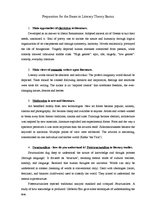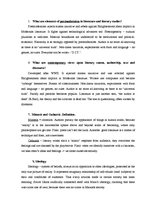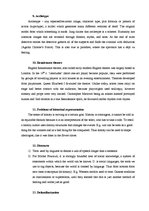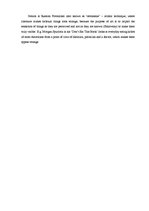-
Literary Theory Basics. Exam Notes
11. Problems of historical representation
The sense of history is moving to a certain goal. History is contingent, it cannot be told in an equitable fashion because it is an interpretation of the teller, who has to take a side. To retell a history author uses literary structures that changes the events. E.g. war can be seen as a good thing for the winners and as a bad thing for the conquered. Thus history can be used to shape ideologies, like it was done in the Soviet times.
12. Discourse
1) Term used by linguists to denote a unit of speech longer than a sentence.
2) For Michel Foucault, d. is strongly bounded area of social knowledge, a system of statements within which the world can be known. D. is social languages, the tools we use to tag objects, because the world is created by language. Thus from notions form new ones (conceptual dictionary). E.g. Western medics used to treat Chinese medicine as charlatanism or superstition, until they learned that this is just another method of healing and works just as good.
13. Defamiliarization
Notion is Russian Formalism also known as ‘ostranenie’ – artistic technique, where literature makes habitual things look strange, because the purpose of art is to impart the sensation of things as they are perceived and not as they are known (Shklovsky) to make them truly visible. E.g. Morgan Spurlock in his ‘Don’t Eat This Book’ looks at everyday eating habits of most Americans from a point of view of dietician, politician and a doctor, which makes them appear strange.
…
Konspekts, kas palīdz sagatavoties eksāmenam Literatūrzinātnes pamatos augstskolā. Apskatīti sekojoši jautājumi: 1.Main approaches of classicism to literature, 2.Main views of romantic writers upon literature, 3.Modernism in arts and literature, 4.Structuralism. Poststructuralism in literary studies, 5.Elements of postmodernism in literature and literary studies, 6.Contemporary views upon literary canon, authorship, text and discourse, 7.Mimesis and Catharsis. Definition, 8.Ideology, 9. Archetype, 10. Renaissance theatre, 11. Problems of historical representation, 12. Discourse




